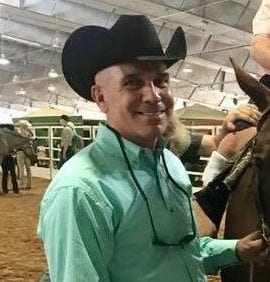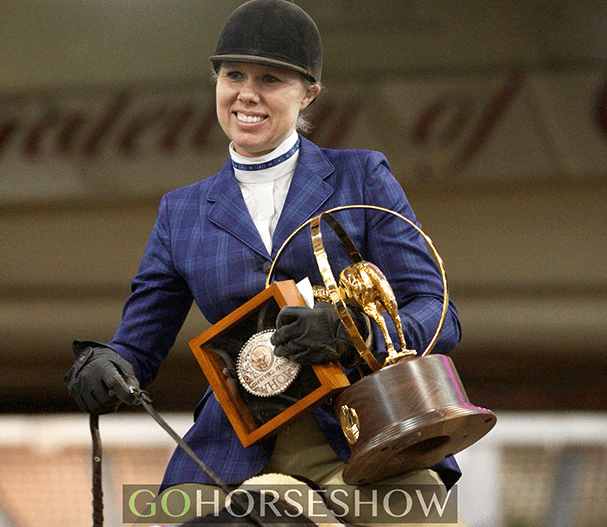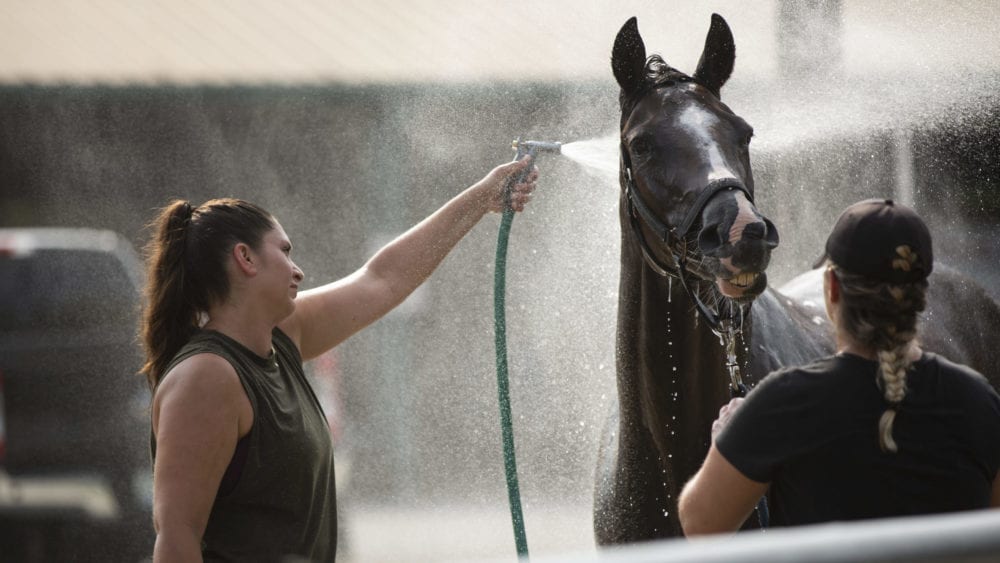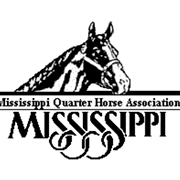Riding a spooky horse can be one of the most challenging tasks for riders of any level. An unexpected jump in the show pen can often mean the difference between placing, and being left off the card. Our equine partners must be as “quiet” and “bombproof” as possible.
But how do they come to be this way? A lot boils down to some of their first lessons in their younger years.
GoHorseShow had the opportunity to sit down with AQHA Professional Horsemen Stephen Stephens and Beth Case to discuss their methods for successfully desensitizing young horses.
Create confidence, not fear.
 AQHA judge Stephen Stephens has been training horses for nearly forty years. He says that people often “scare them, instead of presenting new things to them” when it comes to desensitizing younger horses. “Like when they go to sack one out,” for instance, “they go to scare them – not on purpose – but if they kind of look at you and step back, like ‘what’s going on here?’ then you have to soften up and work your way into it,” he explained.
AQHA judge Stephen Stephens has been training horses for nearly forty years. He says that people often “scare them, instead of presenting new things to them” when it comes to desensitizing younger horses. “Like when they go to sack one out,” for instance, “they go to scare them – not on purpose – but if they kind of look at you and step back, like ‘what’s going on here?’ then you have to soften up and work your way into it,” he explained.
Multiple World and Congress champion trainer Beth Case of Highpoint Performance Horses agreed, saying that “you can’t get after the horse or get mad at the horse for being scared. You need to give them the confidence and tell them that it is going to be okay, and they need to get over it because it’s okay, not because you’re going to beat them for it.”
Rather than just jumping into the process too quickly and too aggressively, individuals should take their time with each horse to avoid unintentionally scaring them. Doing so will help build the horse’s confidence in its handler because “fear isn’t desensitizing,” as Stephens told us.
Don’t let them live sheltered lives.
 If a horse has never encountered a particular object, sight, or sound before, they will likely be inclined to be unsure of the new occurrence. Case explained that one of the best steps someone can take is to expose their horse to every potentially “scary” thing possible.
If a horse has never encountered a particular object, sight, or sound before, they will likely be inclined to be unsure of the new occurrence. Case explained that one of the best steps someone can take is to expose their horse to every potentially “scary” thing possible.
“Don’t baby them,” she told us, “Just let them be around stuff, you know, like don’t yell at the dogs that are barking and say ‘stop chasing my horse!’ Just let them be around it, let them get used to everything.”
Stephens agreed with this approach, as he explained that “exposure is desensitizing,” more than anything else.
Whether it be a home or at a horse show, the more your horse is exposed to, the less they will have to be afraid of. ‘Bombproof’ horses aren’t made from always living in the perfect world. They are built from encountering bad situations and being coached through how to respond to them.
Building trust with young horses is vital.
While this might seem like a basic, ‘no-duh,’ tip, it is one that cannot be passed by in the process of shaping a quiet horse. Stephens explained that when he is working on desensitizing a young horse, one of his favorite practices is “just a constant hanging out with them.”
Creating scenarios, especially with weanlings, where “they have no choice but to see me,” he said, is the first step to building trust in these young horses that will allow the process to continue. Once you have established the horse’s confidence in you, “then you can start exposing them to more things, and they trust you,” Stephens said.
“I think a part of desensitizing isn’t really ‘desensitizing,’ but instead, trusting the handler with situations that you’re not going to put them in a bad position,” he finished.
Building a trusting relationship between horse and handler is vital to the horse’s future ability to navigate new situations and become the ideal show partner.
Teaching an old dog new tricks?
Often, older horses will be “spooky” from the after-effects of a bad experience that has left them with little confidence in their handler. When situations arise with older horses where they expose their lack of confidence, it isn’t so much of “teaching an old dog new tricks” as it shows the horse that there is still a potential for that confidence to be rebuilt.
Stephens explained that sometimes, this involves “dominating” the horse in the same way as “a child throwing a temper tantrum on the ground – sometimes you have to sit them in the chair and say, ‘When you’re ready, I’ll be ready for you.’”
Instead of reinforcing the horse’s trauma by avoiding what they are scared of, or by punishing them for their fear, with an older horse, one should make an effort to consistently expose the horse to the object, sound, or situation until they once again find confidence in their handler.
Like children, horses have to be taught with patience and understanding to avoid creating negative experiences that will affect them for life. Properly desensitizing a horse by building its trust and confidence in people is one of the best measures that can be taken to shape that ‘bombproof’ partner that every rider desires.
Next time you encounter a ‘spooky’ horse, or find yourself working with a young prospect, keep these tips in mind to find success in the process of desensitizing.









